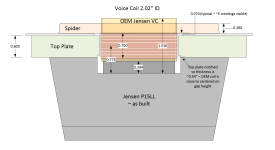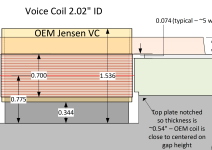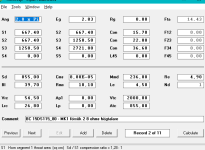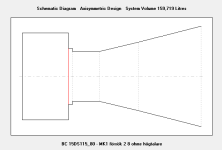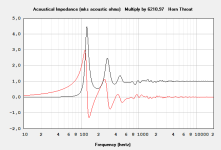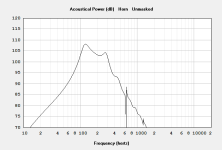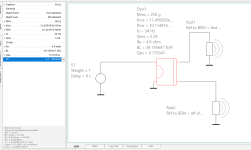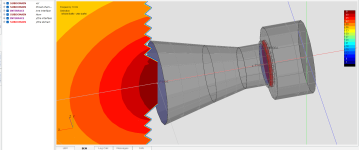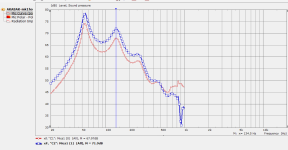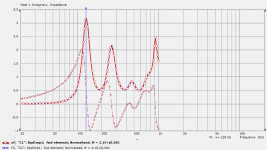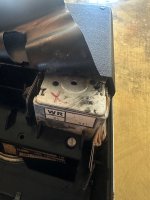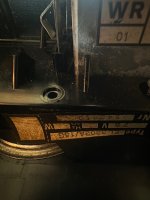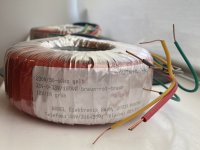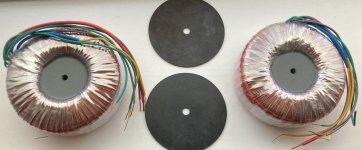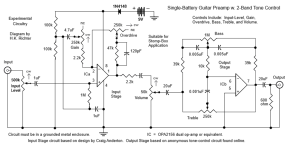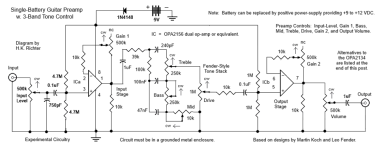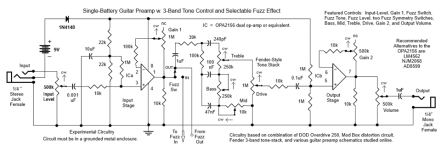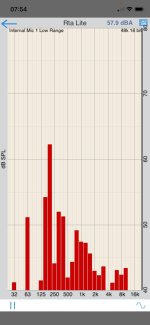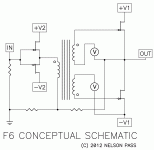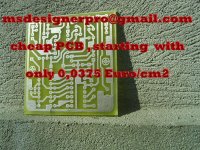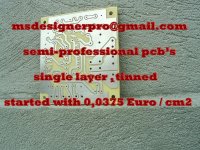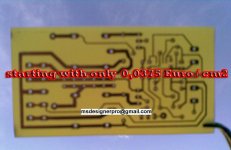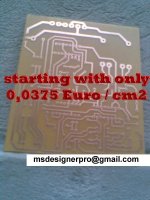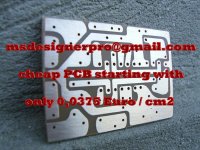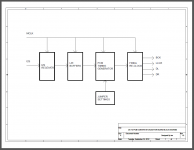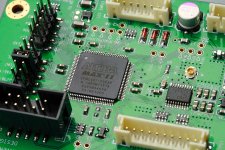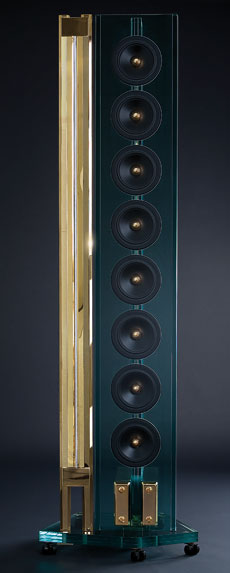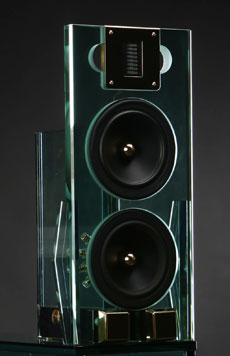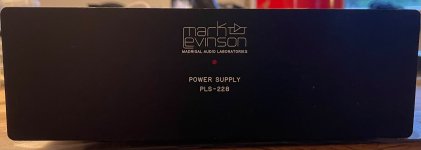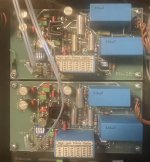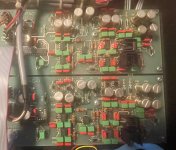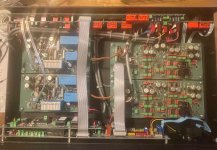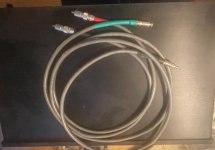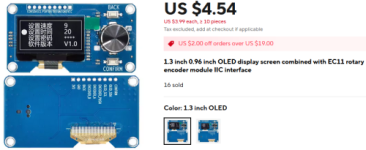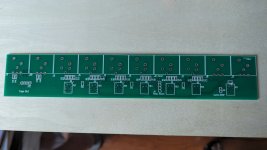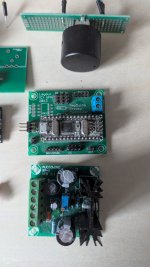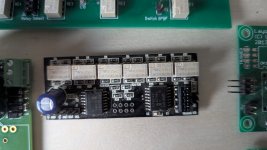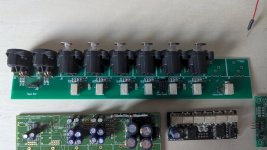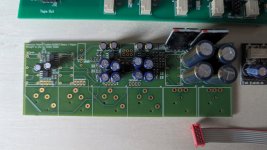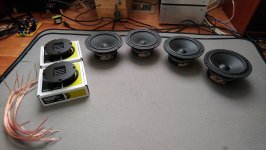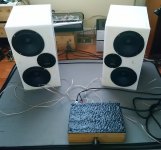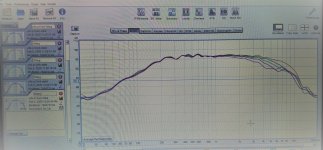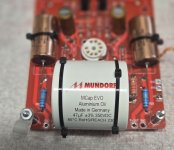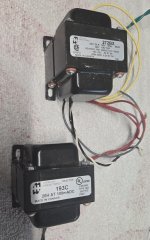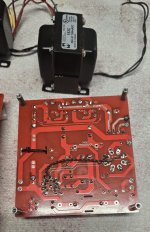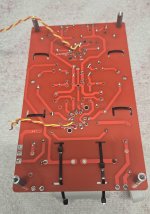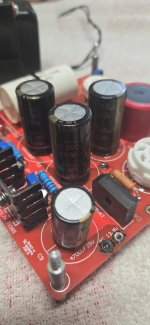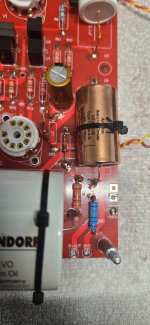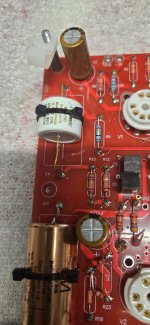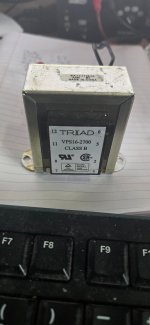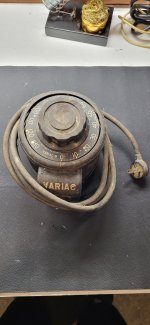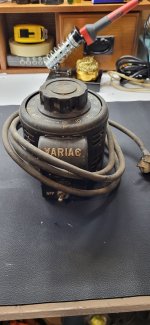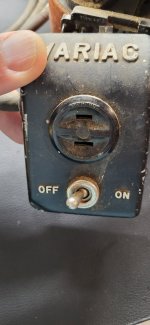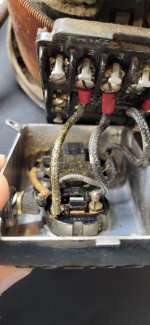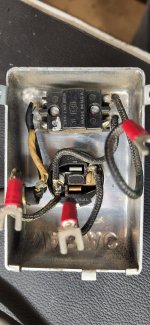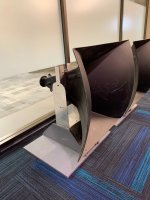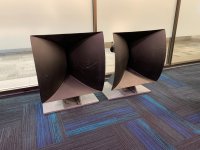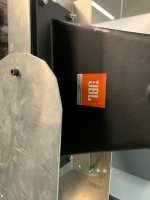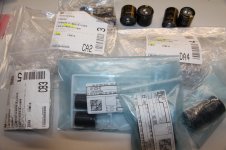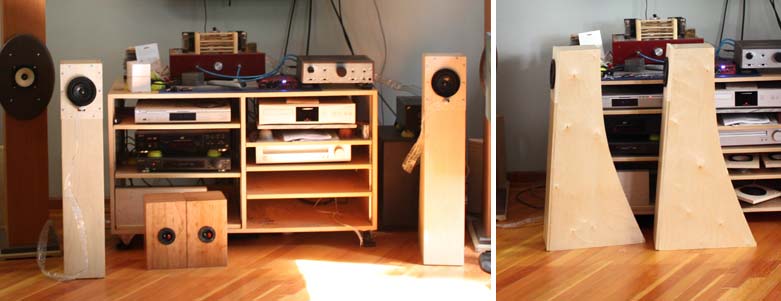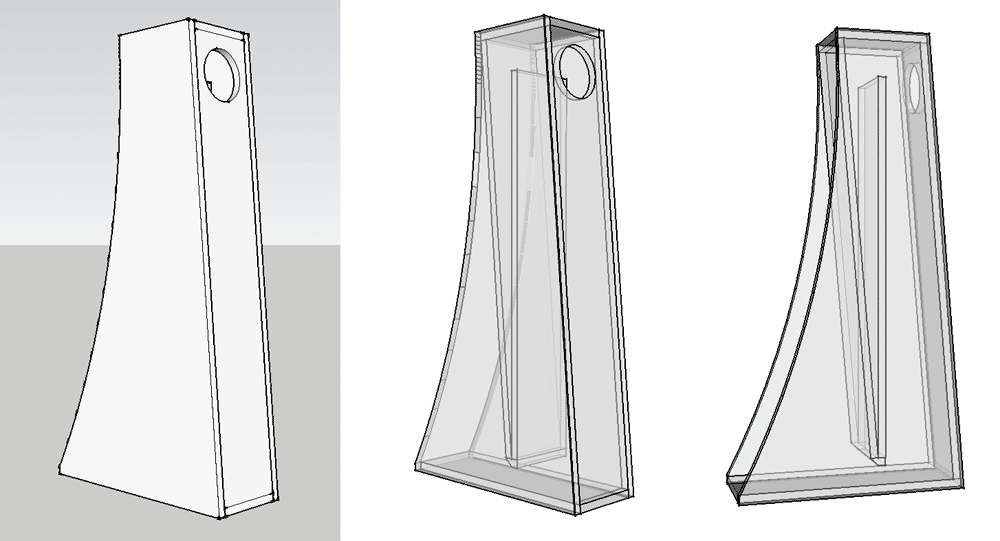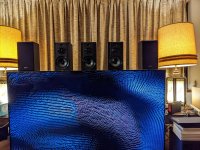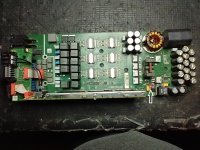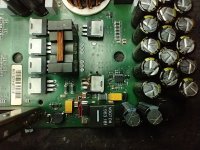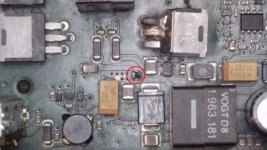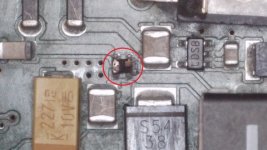Verified Single-Battery Guitar-Preamp Designs
Here are six guitar preamp circuit designs, each shown powered by a single 9V battery. I posted some of them in this forum a while back but have lately revised them using a simulation website; CircuitLAB.
www.circuitlab.com After working out all the bugs in a given diagram (very few thanks to help from my friends here at DIYAudio), the software at CircuitLAB displays a graph of circuit performance which verifies the design’s viability and allows for checking how changing part-values affect the circuit.
I have not built and tested these circuits. Thus, though verified, they must be viewed as experimental, so a prospective builder should breadboard test a chosen circuit before committing to a fully soldered build. But it is assumed that anyone contemplating using any of my designs as a basis for a new project is already an experienced technician. Hence, I cannot take responsibility for the outcome should someone base a project on any of my designs. I can only assure readers that they were verified using simulation software designed for that purpose. And I highly recommend CircuitLAB, if interested. They only allow one free trial project, but I like it so much I’m paying for it.
The diagrams involve various features and should be taken case-by-case to see which one or more may interest a possible builder. Also, it is allowed that subcircuits from one can be used in another or even used in a project not of my design. Notes are included in the diagrams to help make things clear and for specifying part numbers. First up is the most basic design, with Tone, Level, Bright, Drive, Gain, and Volume controls.
I have retained the symbols required by the CircuitLAB simulator for inputs and outputs, but a builder can simply imagine replacing them with female 1/4-inch phone-jacks, as shown below.
Inspiration for the input stage of the above preamp design must be credited to Austrian author Martin Koch, who wrote and self-published the book
Building Electric Guitars, of which I have the 2nd Edition, 2001. The Circuits in question are on pages 49 and 60, but I made enough changes, compared to the originals, and as the output stage is of my own design, that I can claim the overall design as my invention. But in the interests of full disclosure, I have cited Koch as the source for the input stage.
Next is a design in which the input-stage was inspired by a Craig Anderton design appearing in a 1980s issue of Guitar Player magazine. Notice how he uses positive
and negative feedback. The 2-band tone-control is an even older design, found in many op-amp applications circuits but which originated in the tube-amp days, specifically 1950. Called a Baxandall control, after its inventor, the first such circuit had a tube instead of an op-amp. For an online reference, see site
https://tonestack.yuriturov.com, and select option Baxandall Active Dual Bass Cap. Combining the two circuits makes this diagram my creation, though I have just given full credit to whom it is due. [This is not a James tone-control, which uses much the same circuit but passively. Thus, the James control is often called a Passive Baxandall tone-control circuit.]

A little thinking reveals how the negative and positive feedback controls interact. The negative feedback pot is labeled “Overdrive” while the positive feedback pot is labeled “Gain”. And this makes sense because the Overdrive pot’s position, controlling negative feedback, makes the op-amp operate more cleanly when more feedback is applied, but otherwise allows the op-amp to approach its maximum output rating, causing distortion. This is why the arrow near the pot is in the opposite direction to the actual amount of negative feedback applied, so turning the pot clockwise makes the op-amp get louder. On the other hand, the Gain control sends feedback to the positive op-amp input, thus making it approach its maximum gain rating when more feedback is used, also causing distortion. Ordinarily, you don’t want positive feedback for an op-amp because of the danger of the device possibly exceeding its rated maximum-gain limit, which could in fact burn it out if unchecked. However, it's probably safe to assume that Anderton figured everything out before publishing the circuit, so the device will not exceed its rated maxima (with given part-values), even when overdriven.
Next up is a preamp circuit in which the input and output stages are completely of my own design, though obviously the tone-control is a 2-band Fender-style tone-stack, and inspiration for the diode-based fuzz circuit came from an old Electronics Now magazine article.
Specifically, see article “Build The Mod Box” by T. Henry and J. Orman appearing in the May 1997 issue, pages 45-49 and 60. Surprisingly, the article is available online. Here is the link.
G:\Ebooks\ELECTRONICS\Magazines\Radio-Electronics\EN-1997-05.pdf
In the text of that article, and confirmed in other sources, germanium diodes and LEDs give better sounding fuzz than do silicone diodes. Also, an imbalance between the positive-going and negative-going diodes in an array introduces more even-order than odd-order harmonics into the fuzz tone. In the article, one diode was used in one leg of their array but two in the other. Here, I allow users to select between one, two, or three in different legs. However, only experimentation will reveal whether this arrangement will result in sounds pleasing to the ear. As an addendum in that respect, consider a well-written online source on diode distortion titled “Producing Asymmetrical Clipping”, linked here.
https://www.muzique.com/lab/warp.htm
Below is a more elaborate version of the same kind of preamp, this with 3-band tone.
Note that I rely totally on Yuri Turov’s tone-stack calculator (cited above) when getting part-values for my tone-controls, instead of tediously crunching numbers like I used to do. In some cases, I use default values, as above, but in others I tailor the values to my personal preferences. For instance, I sometimes adjust them to increase the mids of the above tone-stack, as the default values (based on the original Fender design) have a tremendous dip in the mids when all the pots are at their middle positions. I also like to give it more treble and set the response graph as high in amplitude as it will go.
In the preamp design below, I use much the same op-amp circuits original to me but pair them with well-known classic distortion circuits that have been used in the past by many stomp-box makers and hobbyists. Craig Anderton was the first to discover that the inverting buffers in the CD4049 hex-inverting buffer IC produce an overdriven tone similar to that of a saturated preamp tube. Some online sources say his idea was first published in Guitar Player magazine but he had actually published it long beforehand in his book
Electronic Projects for Musicians, from Amsco Publications (first copyrighted in 1975 but later copyrighted again in 1980, as far as my copy states, but I don’t know if there are later editions). In my copy, it’s the “Tube Sound Fuzz”, p 170 -173. Below are two identical clones my source says are used in MXR’s “Hot Tubes” pedal.
I was unable to confirm that MXR made a pedal called “Hot Tubes”, but I did find one by Electro Harmonix. See that circuit here.
hottubes.gif (739×706) That stomp-box is itself quite dated, and is only available used, for instance, at
www.guitarcenter.com. I have also noticed that many modern fuzz pedals use diode clipping instead of overdriven op-amps, or they are sticking with discrete transistor designs. However, whether the above circuit can compete in the tone department can only be known if the circuit is built and sound tests are performed for comparison. Yet, my design should sound very much like the old-school Electro Harmonix Hot Tubes pedal.
Finally for this post, the preamp circuit below features an octave circuit, though the source for it touts it as providing a distorted octave sound. Apparrently its octave tonality is pleasing to the ear. Here, I use a summing-amp to mix the direct and octave signals
Octave Circuit Source: David Morrin, at
https://www.diystompboxes.com/smfforum/index.php?topic=186086
Note: You must sign up with DIY Stompboxes to access the original schematic, which was posted in their forum. However, I have rendered the circuit accurately between the Octave Drive and Octave Level controls, exclusive, while the Trim pot was in the original design, but I renamed it.
That site’s home page is linked here.
https://www.diystompboxes.com
To replace the battery with a standard regulated power-supply, here’s an example circuit.
However, you can also use a 9V adaptor commonly used for stomp-boxes. Yet, here’s a tip for how to make the cheap ones work better (more like a regulated supply).
While the adaptor (wall-wart) is relatively inexpensive, a suitable choke is rather costly. However, if you can find a cheaper one that will work, that’s OK. What’s specified in the diagram are mere examples, provided for the reader’s convenience.
As reported by the designer in the noted Circuit Reference, this circuit will make an ordinarily noisy unregulated +9V wall-wart perform like a regulated supply. But on the other hand, Guitar Center has a 9V wall-wart they list as a “regulated” supply for stomp-boxes. [Probably Zener regulated, which is perfectly acceptable.] It’s only $19.99. The Live Wire PH17000 “Slimline” Power Supply, item # 1342450362499.
https://www.guitarcenter.com
I make no apologies for using old circuits to create my designs. In my experience, if something works in electronics, it will continue to work as long as parts are available. And there is something to be said about the fact that many new commercial stomp-box circuits are based on old circuits or are reissues of old circuits. Proof of desirable tonality, however, will be known only should one of my designs get bult and is put to the test.
EOF

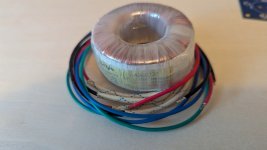
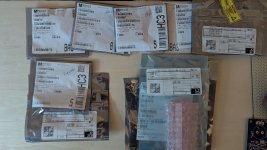
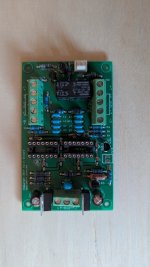
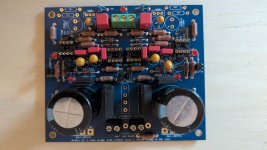
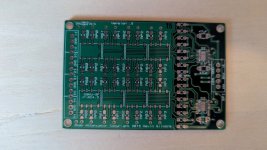
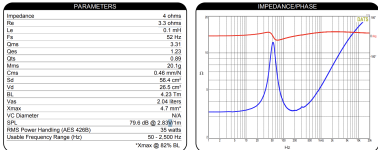
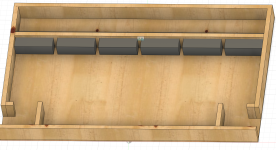
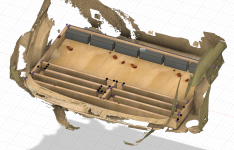
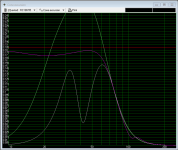
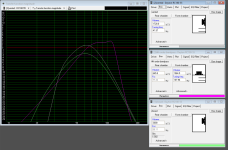
 Looky Here... Original article by Nelson Pass:
Looky Here... Original article by Nelson Pass: 